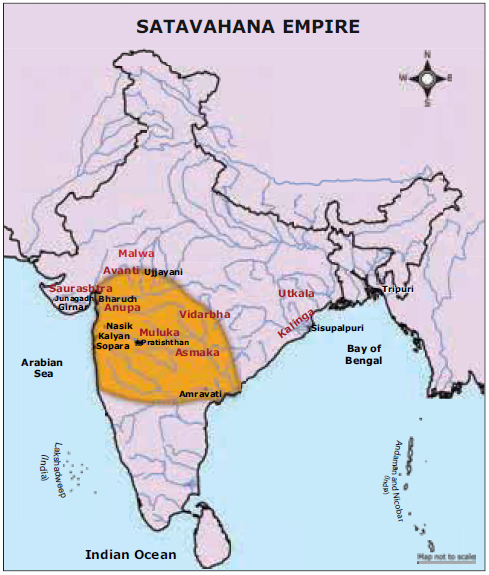Satavahana-Era Inscriptions Unearthed in Telangana Forest
Satavahana-Era Inscriptions Unearthed in Telangana Forest
Why in the News ?
The Archaeological Survey of India (ASI) discovered 11 ancient inscriptions in Gundaram Reserve Forest, Telangana. These inscriptions, spanning 1st century BCE to 6th century CE, offer new insights into the Satavahana dynasty and early Deccan history and religion.
Significant Archaeological Discovery:
- ASI’s Epigraphy Branch conducted a survey near Peddapalli, Telangana.
- 11 inscriptions found in Gundaram Reserve Forest, ~10 km from district HQ.
- Inscriptions dated from 1st century BCE to 6th century CE.
- Highlights early political and cultural landscape of Deccan, particularly Satavahana era.
Key Inscriptions and Historical Insights
- One key inscription in early Brahmi script mentions a donor of the Hāritiputra lineage, likely from the Chutu dynasty.
- This donor excavated a cave for Buddhist monks and claimed friendship with Kumāra Hakusiri, a Satavahana prince.
- Another inscription begins with religious symbols — a trident and damaru — and records land ownership by Siri Devarāna.
Cultural and Religious Significance:● Marks the first known use of religious iconography (trident, damaru) in early South Indian inscriptions. |




